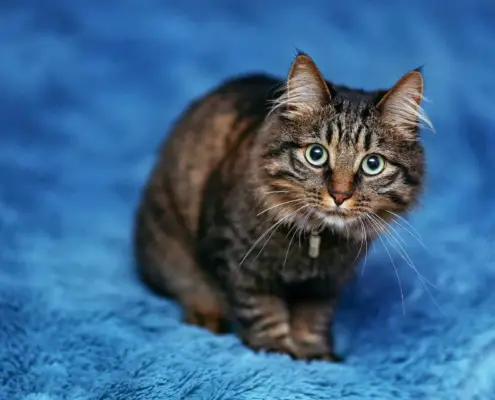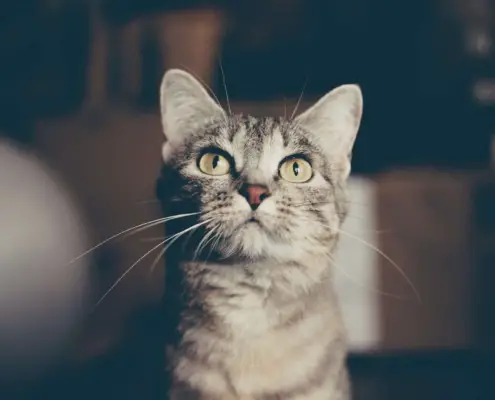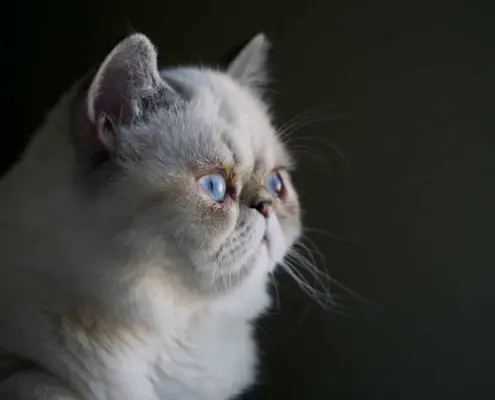Cats have long been known for their independent and sometimes peculiar behavior. From their disdain for certain foods to their unique preferences for playtime, feline quirks never fail to amuse and bemuse their human companions. One such quirk that often leaves cat owners scratching their heads is their fussiness when it comes to water bowls. It seems that no matter how clean or fresh the water may be, some cats simply refuse to drink from certain bowls. But why is this the case? In this article, we will delve into the science behind cats’ peculiar preferences for water bowls and explore the reasons behind their fussiness.

Understanding the importance of water for cats
Before we dive into the reasons why cats are picky about their water bowls, it is important to understand the significance of water for feline health. Just like humans, cats rely on water to survive and thrive. Water plays a vital role in maintaining their overall well-being, as it helps regulate body temperature, aids digestion, and flushes out toxins from their system.
In the wild, cats obtain a significant portion of their hydration from the prey they consume, which contains a high moisture content. However, domesticated cats often rely solely on the water provided to them by their owners. This makes it crucial for cat owners to ensure that their feline companions have access to clean and fresh water at all times.
Common reasons why cats are picky about their water bowls
There are several common reasons why cats may exhibit fussiness when it comes to their water bowls. One of the main reasons is their instinctual need for freshness. Cats have highly sensitive taste buds and noses, and they can detect even the slightest changes in the taste or odor of their water. If the water has been sitting in the bowl for too long or has become contaminated in any way, cats may refuse to drink from it.
Another reason is the material of the water bowl. Some cats have a preference for certain materials, such as ceramic or stainless steel, while others may be deterred by plastic bowls due to the lingering smell or taste. The shape and size of the bowl can also make a difference, as some cats prefer wide and shallow bowls, while others may prefer deeper ones.
The science behind cats’ preferences for water bowls
To truly understand cats’ preferences for water bowls, we must delve into the science behind it. It is believed that cats’ ancestors, such as the African wildcat, had to be cautious about their water sources in the wild to avoid potential contaminants. This instinctual behavior has been passed down through generations, leading to the fussiness we observe in domesticated cats today.
Cats have a highly developed sense of taste and smell, which allows them to detect even the slightest changes in their water. They are particularly sensitive to the presence of chemicals, such as chlorine, which is commonly found in tap water. This sensitivity can lead them to reject water that they perceive as contaminated or unpleasant.
Furthermore, cats have a preference for running water. In the wild, stagnant water sources are more likely to be contaminated, so cats have evolved to associate the sound and movement of running water with cleanliness and freshness. This is why many cats are attracted to dripping faucets or water fountains, as they mimic the natural flow of water.
Factors that may influence cats’ water preferences
Several factors can influence a cat’s preference for water bowls. One such factor is the location of the bowl. Cats are known for their fastidious nature and may prefer to drink in a quiet and secluded area where they feel safe. Placing the water bowl away from their litter box or food bowl can also help avoid contamination and make the water more appealing to them.
The temperature of the water can also play a role in a cat’s preference. Cats generally prefer cool and fresh water, so ensuring that the water is not too warm or too cold can encourage them to drink more. Additionally, some cats may prefer filtered water over tap water, as filtering can remove chemicals and impurities that may affect the taste and odor of the water.
Tips for encouraging cats to drink more water
Encouraging cats to drink more water is essential for their health and well-being. Here are some tips to help you increase your cat’s water intake:
- Provide multiple water bowls: Placing water bowls in different areas of your home can make it more convenient for your cat to access water throughout the day.
- Keep the water fresh: Cats are more likely to drink fresh water, so make sure to replace the water in their bowls daily. Consider investing in a water fountain that circulates and filters the water to keep it fresh for longer.
- Experiment with different bowl materials: Try offering your cat water in bowls made of different materials to see if they have a preference. Ceramic and stainless steel bowls are often favored by cats due to their lack of lingering odors or tastes.
- Consider a water fountain: Cats are naturally attracted to running water, so investing in a water fountain can encourage them to drink more. The sound and movement of the water can be enticing to cats and make them more likely to hydrate themselves.
Different types of water bowls for cats
When it comes to choosing a water bowl for your cat, there are several options to consider. Each type of bowl has its own advantages and disadvantages, so it’s important to find one that suits both your cat’s preferences and your lifestyle.
- Stainless steel bowls: These are durable, easy to clean, and do not retain odors or flavors. They are also less likely to harbor bacteria, making them a hygienic choice for your cat.
- Ceramic bowls: Ceramic bowls are aesthetically pleasing and heavy enough to prevent tipping. However, they can be prone to chipping and may absorb odors over time, requiring frequent cleaning.
- Plastic bowls: Plastic bowls are lightweight and affordable, but they can scratch easily, harboring bacteria and causing allergic reactions in some cats. It’s important to choose a high-quality, BPA-free plastic bowl if you opt for this material.
The role of hydration in feline health
Proper hydration is crucial for maintaining a cat’s overall health and preventing various health issues. Cats rely on water to support their kidney function and prevent urinary tract problems, such as urinary crystals or stones. Dehydration can lead to serious health complications and should be avoided at all costs.
In addition to providing fresh water, you can also increase your cat’s water intake through wet food. Wet cat food has a higher moisture content compared to dry kibble, helping to keep your cat hydrated. Mixing wet food with dry food or adding water to dry food can also encourage your cat to consume more liquids.
How to keep your cat’s water bowl clean and fresh
To ensure that your cat’s water bowl remains clean and fresh, it is important to establish a regular cleaning routine. Follow these steps to keep your cat’s water bowl in optimal condition:
- Wash the bowl daily: Empty the water bowl and wash it with mild dish soap and warm water. Rinse it thoroughly to remove any soap residue before refilling it with fresh water.
- Scrub away stains: If your cat’s water bowl develops stubborn stains or mineral deposits, use a mixture of equal parts vinegar and water to scrub them away. Rinse the bowl thoroughly afterward.
- Avoid using harsh chemicals: Avoid using harsh cleaning products or bleach, as they can leave behind strong odors or residues that may deter your cat from drinking.
- Regularly replace the water: Even if the water bowl appears clean, it is important to replace the water daily to ensure freshness and prevent the growth of bacteria.
Embracing and accommodating feline quirks
In conclusion, cats’ fussiness about their water bowls is not simply a result of their finicky nature. It is rooted in their instinctual behavior and sensitivity to taste, odor, and cleanliness. Understanding the science behind their preferences can help cat owners provide the best possible water drinking experience for their feline companions.
By taking into account factors such as bowl material, water freshness, and location, cat owners can encourage their cats to drink more water and maintain optimal hydration. Offering a variety of water bowls, such as stainless steel or ceramic, and considering a water fountain can also entice cats to drink more.
Ultimately, embracing and accommodating feline quirks, including their pickiness when it comes to water bowls, is part of being a responsible and caring cat owner. By providing clean, fresh water and considering their preferences, you can ensure that your cat stays hydrated and healthy for years to come.
If you enjoyed my article, I would appreciate you sharing it with your network.

Sima Ndlebe
Sima writes for CatBuzz. He is interested in Cats, Health and Fitness, and Entrepreneurship.
Published: 7 February 2024




